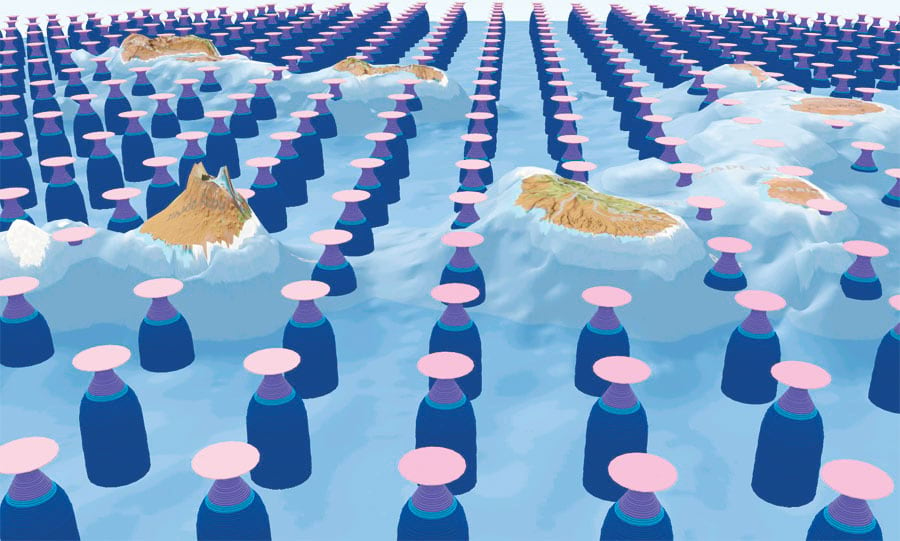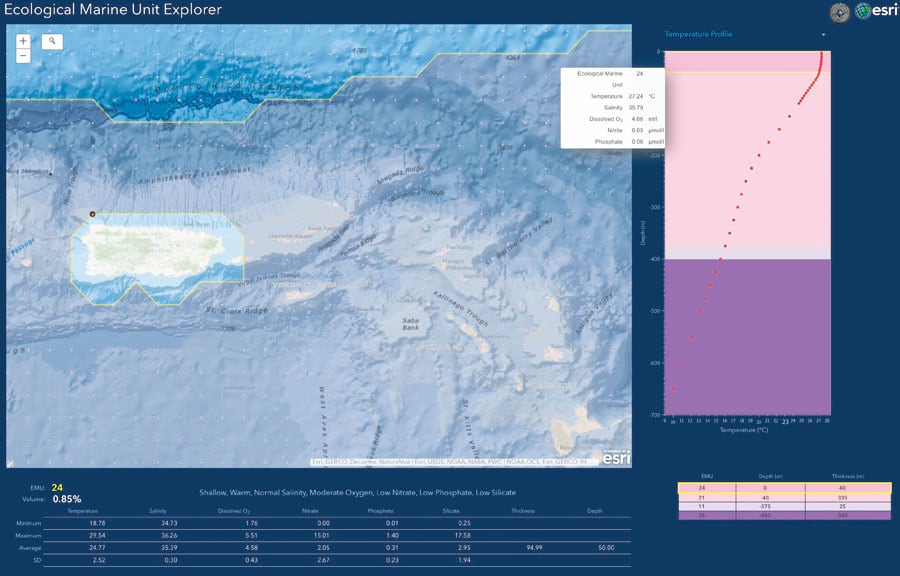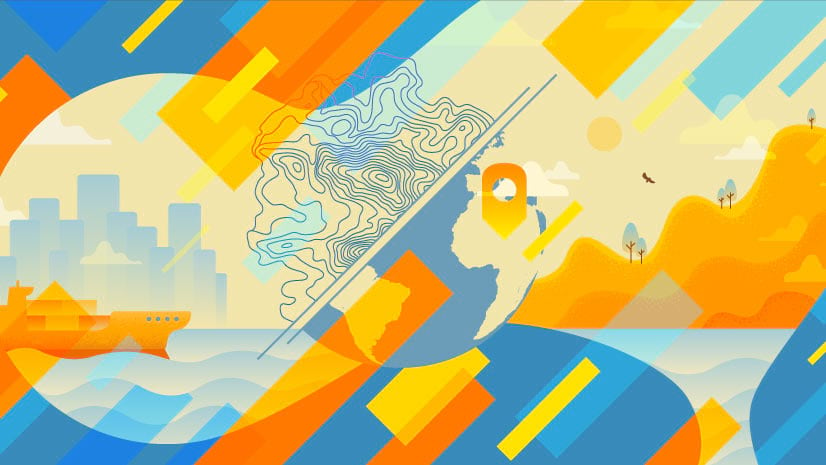Did you know that more than half of the oxygen we breathe comes from the ocean? This oxygen is produced in large part by the photosynthesis of billions and trillions of small plants in the ocean called phytoplankton, as well as the blending of seawater with the atmosphere right at the ocean’s surface.
But the ocean is facing unprecedented pressures that are causing massive disruptions in the ecosystem and nutrient cycle of phytoplankton and countless other species—the result of an extensive, commercially driven depletion of ocean wildlife; industrial-scale pollution; and other human activities. This oceanic turmoil occurs on the seafloor via trawling, dredging, drilling, and mining. It also happens in the water column with nets, long lines, fish-aggregating devices, and other techniques.
Fishing methods like these were introduced over the last few decades to extract marine life with unprecedented speed and scale from ecosystems that were hundreds of millions of years in the making. As a result, they are contributing to the accelerated reduction of oxygen levels in the ocean, as well as in the air and on land all around it.
Indeed, overfishing of the ocean biomass has tremendous effects on the earth’s climate and carbon cycle. Restoring marine life, then, could have a huge impact not just on ocean health but on life on land as well. That is why the decline of oxygen in the ocean concerns absolutely everyone, no matter where we live.

Raising Awareness
There is comprehensive evidence that oxygen levels in open ocean and coastal waters have declined precipitously over the last half-century. According to a recent review article in Science entitled “Declining oxygen in the global ocean and coastal waters,” by Breitburg et al., oxygen in the ocean is currently dropping faster than can be accounted for by physics. This suggests that respiration—the intake of oxygen followed by the release of carbon dioxide—must be increasing. However, a good portion of this decline in oxygen may, in fact, be due to the disruption or destruction of tiny microbes in the ocean.
Scientists definitely need new insight into how changes in oxygen within the ocean are affecting the pathways and processes of these microbes at all depths. The extent to which the system is out of balance is becoming clear, and the pace of this change—as well as how widespread the impacts are—is alarming. We humans cannot afford to wait to take action.
Fortunately, ocean science has many integrated frameworks that combine observations, experiments, modeling, and GIS mapping from scientists, local governments, intergovernmental bodies, and business sectors. These are raising people’s awareness of the pervasiveness of issues such as ocean warming and acidification, as well as the ever-increasing presence of microplastics in the water.
Now, scientists need to raise awareness about how quickly the oxygen is dissipating. But such awareness must spread beyond the pages of scientific journals so it permeates all facets of society. Web maps and visualizations that are intuitive, interactive, and dynamic have the power to do this, driving the point home to a variety of audiences.

The Ecological Marine Units (EMUs) digital ocean project, for example, gives anyone access to millions of observations of the oxygen dissolved in water all over the ocean. The EMUs also show each body of water’s temperature; salinity; and nitrate, silicate, and phosphate concentrations—the likely drivers of many marine ecosystem changes. Some major goals of this project are to support marine biodiversity conservation assessments; aid in research about the economic valuation of marine ecosystem goods and services; and contribute to studies on ocean deoxygenation, acidification, and other environmental impacts.
Another great resource for raising awareness is the Marine Conservation Institute’s interactive Atlas of Marine Protection, also known as the MPAtlas. Momentum is accelerating to designate very large marine protected areas (MPAs) throughout the ocean, and research suggests that sizable MPAs are much more cost-effective to implement and manage compared to smaller ones. Furthermore, larger MPAs generally provide better protection from activities that occur outside of them, since, even though they safeguard a great number of organisms, so many marine animals—especially fish—are constantly on the move across large sections of the ocean. If those organisms can find shelter and stability within large MPAs, they stand a better chance of enduring once they leave them.
These online resources will be key to generating the societal and political will to effectively manage marine habitats in ways that will ultimately reverse the declining levels of oxygen in the ocean and mitigate the serious consequences this has for ocean life and ecosystems. Additionally, the International Union for Conservation of Nature (IUCN), in collaboration with world experts, is coordinating the production of a comprehensive report called Ocean Deoxygenation—Everyone’s Problem: Causes, Impacts, Consequences and Solutions that will further summarize the challenges and implications we face. The IUCN plans to distribute this report far and wide—to government agencies, conservation organizations, citizen groups, and universities.
We must connect important discoveries about the nature of the world with public perception and current policies that shape the habitability of the earth. The global trend by countries all over the world to secure large areas of the ocean within national exclusive economic zones (EEZs) and create “blue parks” as safe havens for ocean life are also reasons to be optimistic, since protecting nature protects human existence.
What to Do Now
So what can you do to stem the tide of ocean deoxygenation? How can you connect the dots and take action to reverse some of the present destructive trends? Consider some of the following options:
- This summer, visit a blue park in person to gain a fuller appreciation of the life-giving resources the ocean provides—including oxygen!
- Join forces with the Sylvia Earle Alliance’s Mission Blue movement and other similar causes that showcase many of these blue parks. With Mission Blue, anyone can nominate a section of the ocean to become a blue park, also known as a Hope Spot, for protection and preservation. Soon, GIS content, such as the EMUs, will be included in this process.
- Use the EMU Explorer apps to study oxygen levels and other parameters throughout the ocean.
- Use the MPAtlas to see other current areas of protection.
- Watch episodes of the BBC’s Blue Planet II series, which wonderfully educates viewers about the nature of the ocean, including scientific evidence of the many ways our ocean is declining due to human activity.
- Take simple steps to recycle or greatly reduce plastic use—especially straws; this affects the ocean no matter where you live because it all starts upstream with wind and water flows. Plastic pollution of waterways is intimately connected to declining oxygen levels in the ocean. Organizations such as Algalita Marine Research & Education, the Save the Albatross Coalition, the Aquarium of the Pacific, and the Marine Conservation Institute all provide excellent tips and resources.
There’s plenty to do to assist with marine conservation and help reverse the deoxygenation of our ocean. But we need to act now—because if there’s no blue, there’s no green, which means there will eventually be no humans. No kidding!



